Intro
Discover healthy low sodium food options, including low-sodium recipes, salt-free seasonings, and reduced-sodium products, to manage blood pressure and promote overall wellness.
Reducing sodium intake is essential for maintaining good health, as excessive sodium consumption can lead to high blood pressure, heart disease, and stroke. The American Heart Association recommends consuming no more than 2,300 milligrams of sodium per day, and ideally no more than 1,500 milligrams if you're at risk for high blood pressure or heart disease. With the average American consuming over 3,400 milligrams of sodium per day, it's clear that many of us need to make some changes to our diets. One of the best ways to do this is by incorporating low sodium food options into our meals.
Making the switch to low sodium foods can seem daunting, especially if you're used to relying on processed and packaged foods that are often high in sodium. However, with a little bit of planning and creativity, it's easy to create delicious and healthy meals that are low in sodium. Fresh fruits and vegetables are naturally low in sodium, making them a great place to start. You can also explore the many low sodium alternatives to your favorite foods, such as low sodium soups, broths, and sauces. By making a few simple substitutions and being mindful of food labels, you can significantly reduce your sodium intake and improve your overall health.
In addition to the health benefits, low sodium foods can also be incredibly flavorful and varied. From hearty stews and soups to fresh salads and stir-fries, there are countless ways to prepare low sodium meals that are both delicious and nutritious. Whether you're a seasoned cook or just starting out in the kitchen, there are many resources available to help you get started with low sodium cooking. With a little bit of experimentation and exploration, you can discover a whole new world of flavors and ingredients that are not only good for you, but also delicious and satisfying.
Understanding Sodium and Its Effects on the Body
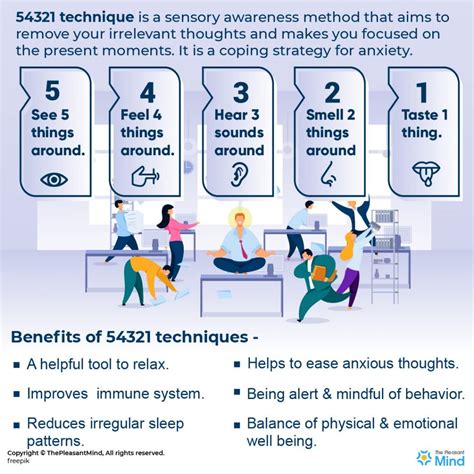
How Sodium Affects Blood Pressure
When sodium is consumed in excess, it can cause the body to retain fluid, which can lead to an increase in blood pressure. This is because the excess fluid can put extra pressure on the blood vessels, making them work harder to pump blood throughout the body. Over time, this can lead to the development of high blood pressure, which can increase the risk of heart disease, stroke, and other cardiovascular conditions.Low Sodium Food Options
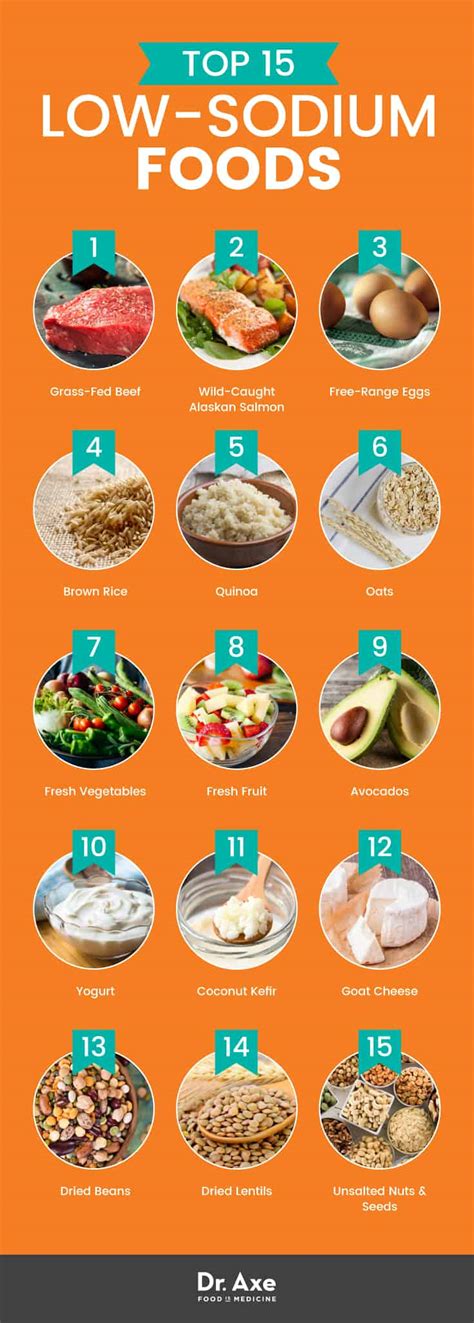
- Lean proteins, such as chicken, turkey, and fish
- Whole grains, such as brown rice, quinoa, and whole wheat bread
- Low fat dairy products, such as milk, cheese, and yogurt
- Herbs and spices, which can add flavor to food without adding sodium
Tips for Reducing Sodium Intake
Reducing sodium intake can seem daunting, but there are many simple tips and tricks that can help. Some tips include: * Reading food labels carefully to check for sodium content * Choosing fresh, whole foods over processed and packaged foods * Using herbs and spices to add flavor to food instead of salt * Cooking from scratch using low sodium ingredients * Limiting sodium-rich condiments, such as soy sauce and teriyaki sauceBenefits of Low Sodium Diets
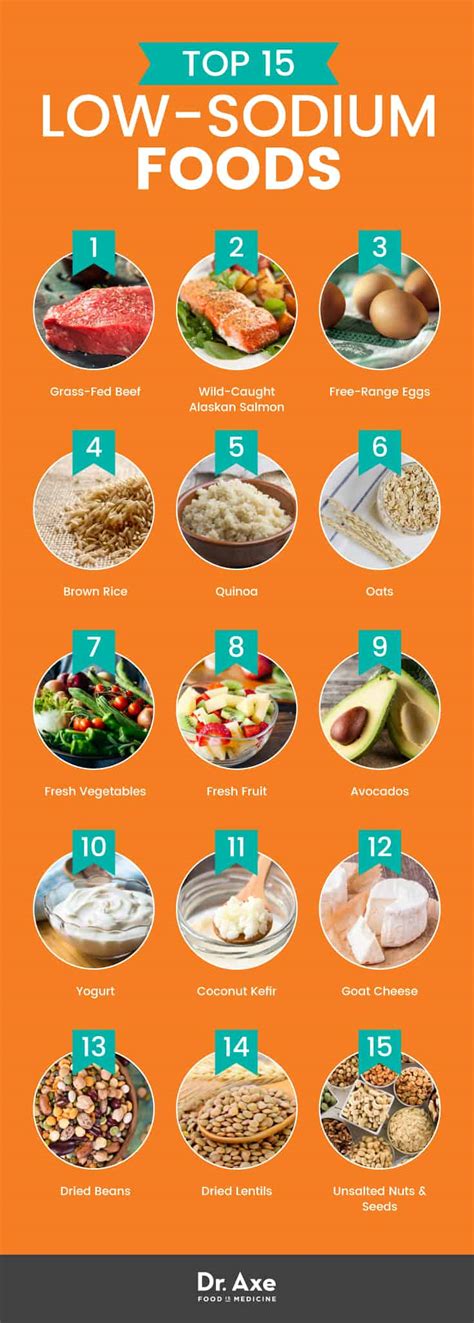
Low Sodium Meal Planning
Planning low sodium meals can seem overwhelming, but it doesn't have to be. Some tips for planning low sodium meals include: * Starting with a variety of fresh, whole foods * Incorporating lean proteins and whole grains into meals * Using herbs and spices to add flavor instead of salt * Limiting sodium-rich condiments and sauces * Cooking from scratch using low sodium ingredientsLow Sodium Recipes
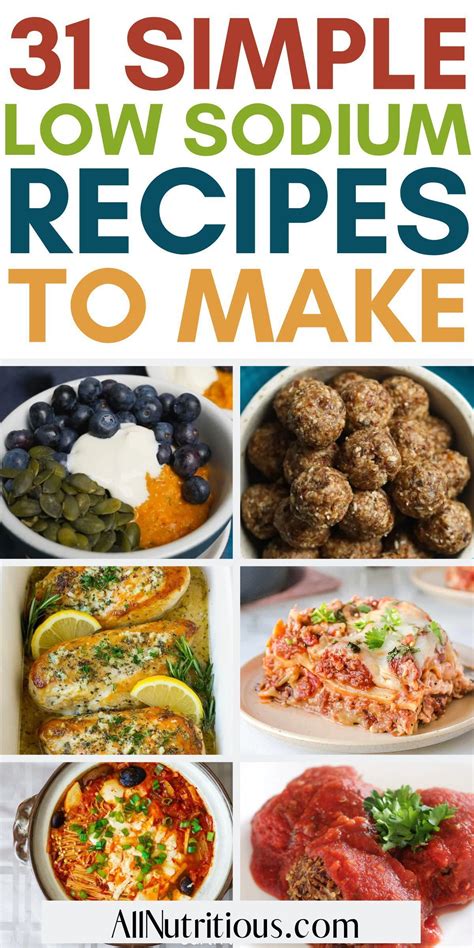
Low Sodium Snacks
Snacking can be a challenge when trying to reduce sodium intake, but there are many healthy and delicious low sodium snack options available. Some ideas include: * Fresh fruits and vegetables * Nuts and seeds, such as almonds and pumpkin seeds * Low sodium crackers with avocado or hummus * Yogurt with fresh berries and a sprinkle of granola * Hard-boiled eggs or edamameCommon Low Sodium Foods

Low Sodium Food Swaps
Making low sodium food swaps can be a great way to reduce sodium intake. Some ideas include: * Swapping soy sauce for a low sodium alternative, such as tamari or coconut aminos * Choosing low sodium soups and broths instead of regular versions * Using herbs and spices to add flavor to food instead of salt * Selecting low sodium condiments, such as ketchup and mustard * Limiting sodium-rich foods, such as processed meats and cheesesLow Sodium Meal Ideas
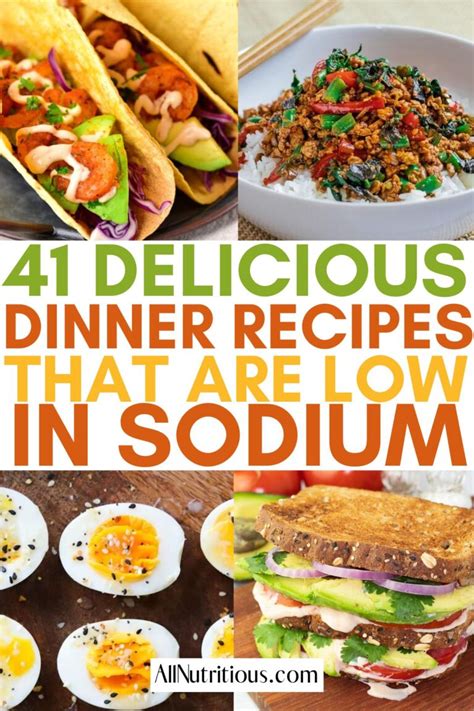
Low Sodium Cooking Tips
Cooking low sodium meals can be easy and delicious. Some tips include: * Using herbs and spices to add flavor to food instead of salt * Choosing low sodium ingredients, such as low sodium soups and broths * Limiting sodium-rich condiments and sauces * Cooking from scratch using fresh, whole ingredients * Experimenting with new recipes and flavors to keep meals interestingReducing Sodium in Favorite Foods
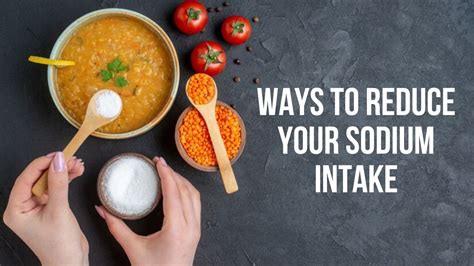
Low Sodium Food Challenges
Reducing sodium intake can be challenging, especially when it comes to favorite foods. Some common challenges include: * Cravings for high sodium foods, such as chips and popcorn * Limited access to low sodium ingredients and recipes * Difficulty finding low sodium alternatives to favorite foods * Struggling to cook from scratch using fresh, whole ingredients * Feeling deprived or restricted when reducing sodium intakeWhat are the benefits of a low sodium diet?
+A low sodium diet can help reduce the risk of high blood pressure, heart disease, and stroke. It can also improve overall cardiovascular health, reduce fluid retention and swelling, and support healthy weight management.
How can I reduce sodium in my favorite foods?
+Reducing sodium in favorite foods can be done by using low sodium ingredients, limiting sodium-rich condiments and sauces, and choosing low sodium alternatives to favorite foods. Cooking from scratch using fresh, whole ingredients can also help reduce sodium intake.
What are some common low sodium foods?
+Some common low sodium foods include fresh fruits and vegetables, lean proteins, whole grains, and low fat dairy products. Herbs and spices can also be used to add flavor to food without adding sodium.
How can I make low sodium meal planning easier?
+Making low sodium meal planning easier can be done by starting with a variety of fresh, whole foods, incorporating lean proteins and whole grains into meals, and using herbs and spices to add flavor instead of salt. Limiting sodium-rich condiments and sauces can also help.
What are some low sodium snack options?
+Some low sodium snack options include fresh fruits and vegetables, nuts and seeds, low sodium crackers with avocado or hummus, yogurt with fresh berries and a sprinkle of granola, and hard-boiled eggs or edamame.
We hope this article has provided you with a comprehensive guide to low sodium food options and has inspired you to make some positive changes to your diet. Reducing sodium intake can seem daunting, but with a little bit of planning and creativity, it's easy to create delicious and healthy meals that are low in sodium. Remember to always read food labels carefully, choose fresh, whole foods over processed and packaged foods, and use herbs and spices to add flavor to food instead of salt. By making a few simple substitutions and being mindful of food labels, you can significantly reduce your sodium intake and improve your overall health. Share your favorite low sodium recipes and tips with us in the comments below, and don't forget to share this article with your friends and family who may be looking to reduce their sodium intake. Together, we can create a healthier and more balanced relationship with food.
